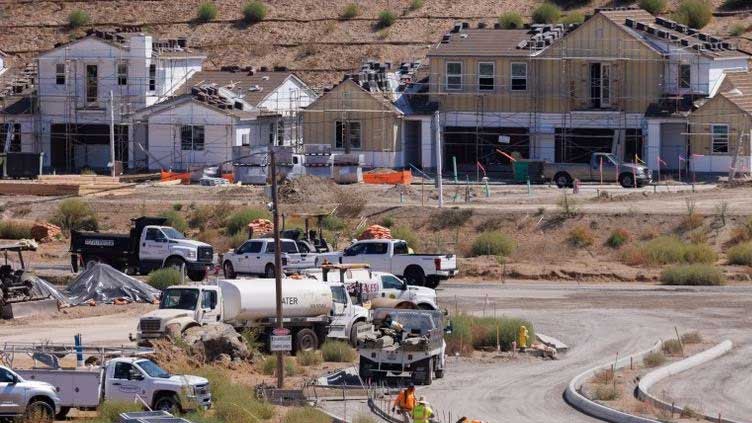US single-family housing starts rebound sharply in September

Business
US single-family housing starts rebound sharply in September
WASHINGTON (Reuters) - U.S. single-family homebuilding rebounded sharply in September, boosted by demand for new construction amid a dearth of previously owned homes, but the highest mortgage rates in nearly 23 years could slow momentum.
Single-family housing starts, which account for the bulk of homebuilding, increased 3.2% to a seasonally adjusted annual rate of 963,000 units last month, the Commerce Department said on Wednesday. Data for August was revised to show starts dropping to a rate of 933,000 units instead of 941,000 units as previously reported.
The rate on the popular 30-year fixed mortgage surged in September, averaging 7.31% in the last week of the month, the highest since late 2000, according to data from mortgage finance agency Freddie Mac. Mortgage rates have risen in tandem with the yield on the benchmark 10-year Treasury note, which has spiked to a 16-year high, in part reflecting the economy's resilience.
A survey on Tuesday showed confidence among single-family homebuilders deteriorated for a third straight month in October, with the National Association of Home Builders/Wells Fargo Housing Market Index dropping to a nine-month low. Builders reported lower levels of buyer traffic.
Starts for housing projects with five units or more soared 17.1% to a rate of 383,000 units in September. Further gains are likely to be limited by reduced access to credit access for builders as well as a huge stock of multi-family housing under construction.
Overall housing starts accelerated 7.0% to a rate of 1.358 million units in September. Economists polled by Reuters had forecast starts rebounding to a rate of 1.380 million units.
Permits for future construction of single-family homes rose 1.8% in September to a rate of 965,000 units.
Residential investment has contracted for nine straight quarters, the longest such stretch since the housing market bubble burst, triggering the 2008 global financial crisis and the Great Recession.


